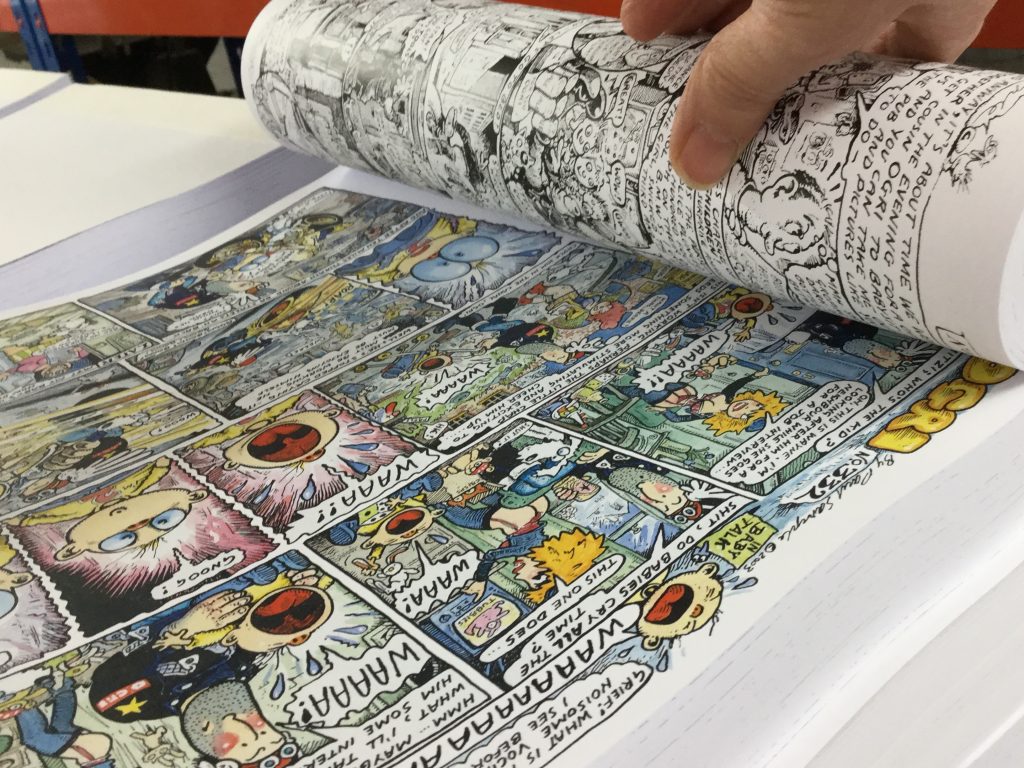
Well now. There’s only a handful of copies left, so I suppose it’s time to tell the tale, weird and wonderful as it is, of how Paul Sample’s massive Ogri Compendium Now to Make My Getaway came into being – and how it went, too.
Cast your mind back to 2013, when BSH magazine, Ogri’s final lodging, ousted Our Hero from his customary spot on the inside back page. But we won’t talk about that. OR BLOODY WELL WILL WE?
Not long after this unseemly episode, Paul decided to actually retire. He sold all his art kit, and got Marcus, the Facebook page admin, to do a post to that effect – and that post was spotted by one Claire Leavey, longtime fan and, as it happens, a former editor of both the short-lived UK Motorcycle Classics and the rather more venerable CBG. So she knew how to do stuff with bits of paper and printing and that.
Long story short, she got in touch and the plot to get a book produced was born. She, silly mare, didn’t know at the time that the original strips had largely been sold off, and she also – daft cow – didn’t know that much of the publishers’ archives, whether files or films, was long-gone too. BUT Y’KNOW, WHATBLEEDINGEVER.
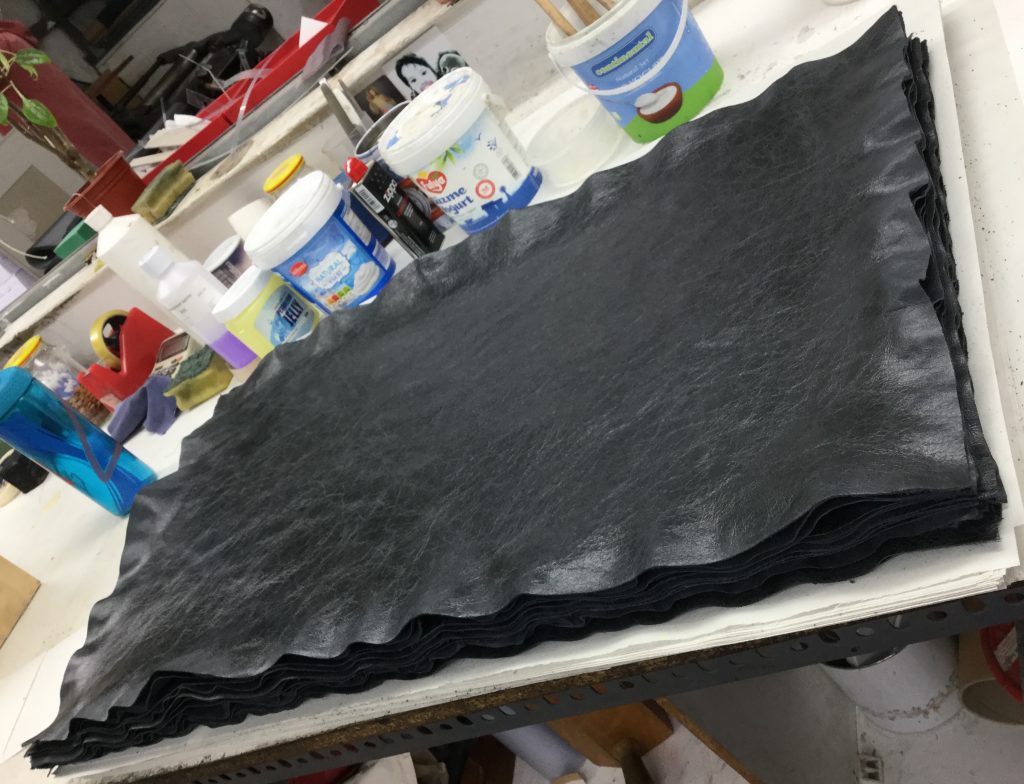
The Kickstarter crowdfunding campaign launched late 2014, and the response was fantastic. £17k was raised to fund the work, but that was in fact a problem because the target was £30k, and so the Kickstarter failed and no money was taken. Claire sat scowling in her publishing shed the next day and ground her teeth a bit, then sat down and spent that afternoon putting together a Big Cartel shop to offer all the now homeless merchandise bits that had been offered as rewards on the Kickstarter. And so the Team Ogri online store was born, money started rolling in, and she was in fact able to sit down in front of her creaking old secondhand pre-Intel G5, open her copy of Photoshop 3, and sit there, dear reader, for THE NEXT TWO SODDING YEARS.
Collecting up the strips was itself the work of eighteen rather intensive months. Some strips were originally included in pretty poor shape, only to be replaced – up to three times – by better quality examples as they were discovered (or appeared on eBay – thanks Dave!). Each digital source had the images stored in different file formats, at different sizes and resolutions, and some – notably those kindly supplied by Hall’s auctioneers – had never been intended for reproduction at A4 at all, let alone in the lustrous over-size format we managed in the end. Hall’s had taken a set of photographs for use in the catalogue for their 2010 auction of Paul’s extensive archive of originals, and these had only ever been made for reproduction at a maximum of 12cm high. It took a fair bit of work to get them onto the page – and it was sheer luck that the photographer had made them good enough for this to even be possible. The distortion on some of these is due to them being propped up a bit bent when the picture was taken!
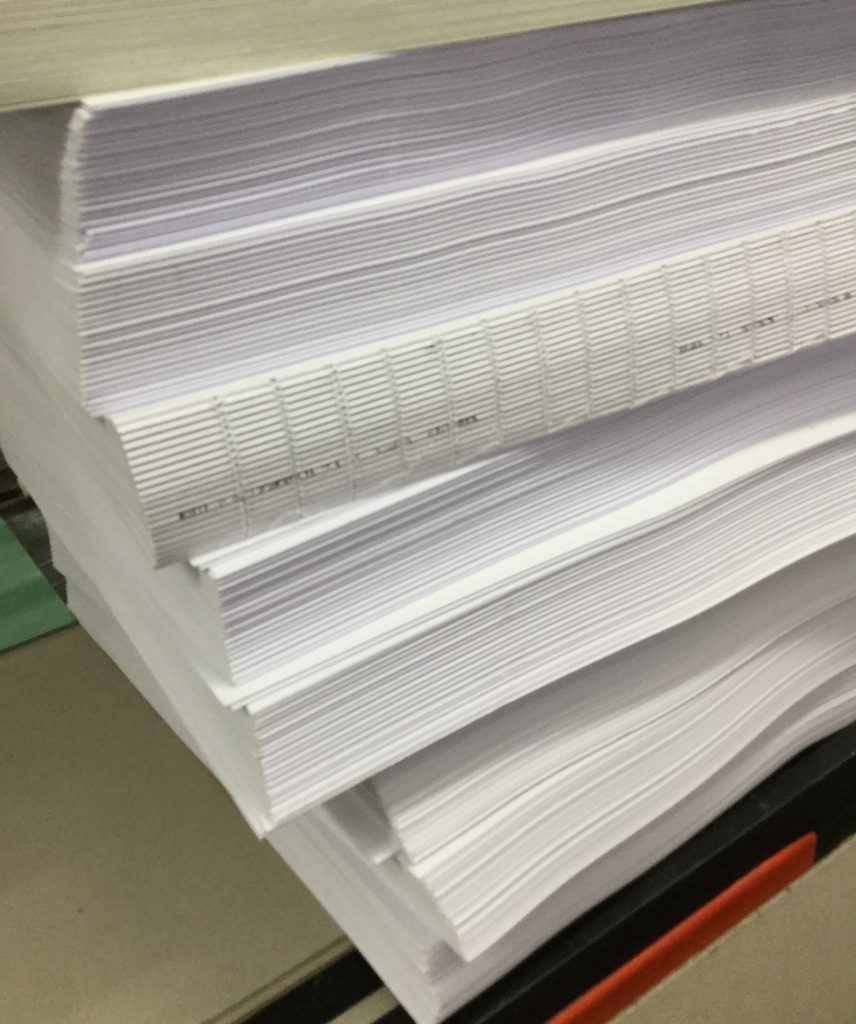
Another significant source was the wonderful people at Haynes, Paul’s publishers for many years and several volumes. They sent over everything they had in the archive at (almost) instantly usable quality, within days. Sadly, this only encompassed the Ogri Collection Volume 1 (from early beginnings to strip 194, all black and white) and Collection Volume 3 (286-349). Both volumes had already been digitised for their archive, and once sized and formatted, were ready to roll – but sadly none of the others had made it into binary, and so when the bulky plate-maker’s films were binned, that was the end of all source material for those books. Incredibly, Hall’s photos turned out to have accidentally majored on the ‘lost’ strips of Volume 2 – and so the painstaking editing needed to bring them to the page was very much not wasted.
This still left a fair number of gaps, however – and into the breach stepped a lovely chap who had followed the Kickstarter, Mark Wilson. Mark had a complete bound collection, and offered to help with the patching-in job that now stretched ahead. His first, and most essential, job was to look up the relevant issue numbers for each strip, which then gave a framework for tracking them down – and ultimately, Mark actually provided a lot of the missing material himself, valiantly scanning a pile of them using his home PC. Even then, binding had eaten the edges off a few of the strips from Mark’s collection, so Bike publisher Bauer stepped into the breach with the last two completely unobtainables from their bound archive (again, no digitised archive and no surviving films). Hurrah! Ta-da! All done!
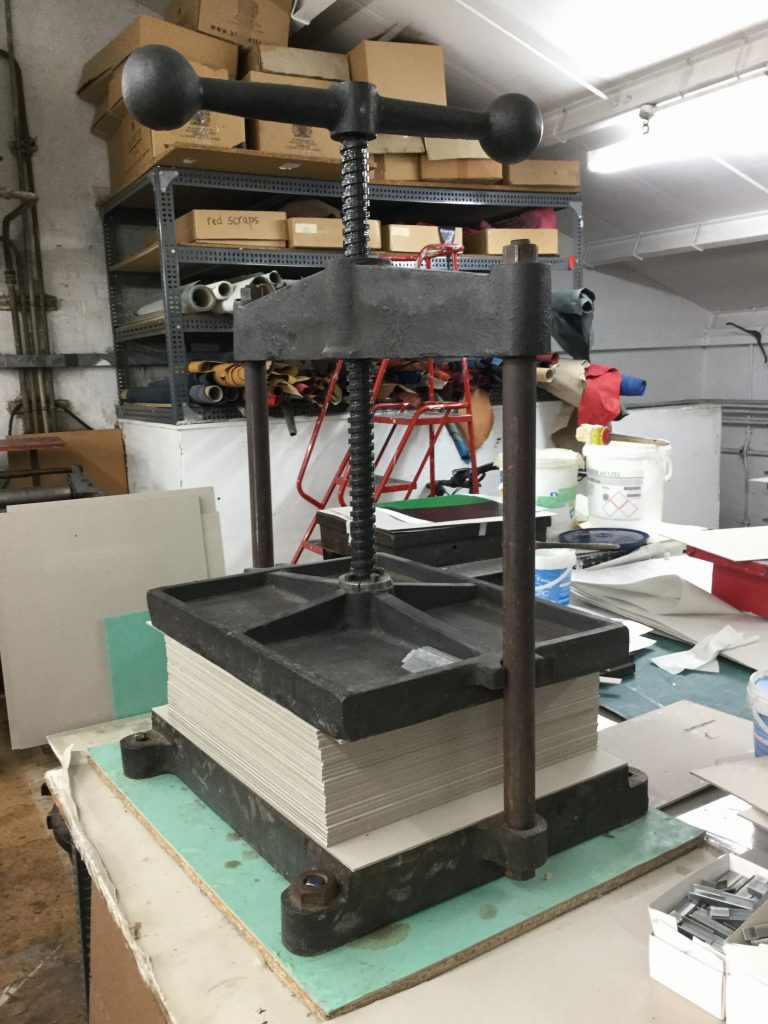
Except. Just as the top of the Photoshop mountain was in sight, Paul tripped over something in his spare room. The something he tripped over was a small stack of portfolios containing 102 actual original strips, including No.14 – now the oldest known surviving original. Claire spat out the remains of her final tooth and sat down again at the bastard computer.
The book came in three binding options (Black buckram with and without case, and the first 100 in distressed Wildman and Bugby leather with reinforced case). Every copy was numbered, and the leather copies were signed and doodled by Paul himself. We’d originally planned to do 500 copies, but fifty-odd were damaged in a spectacular haulier failure which saw them catapulted the length of a curtain-sider, and several completely written off. This is still subject to legal argy-bargy, so for now we’ll leave that story there…
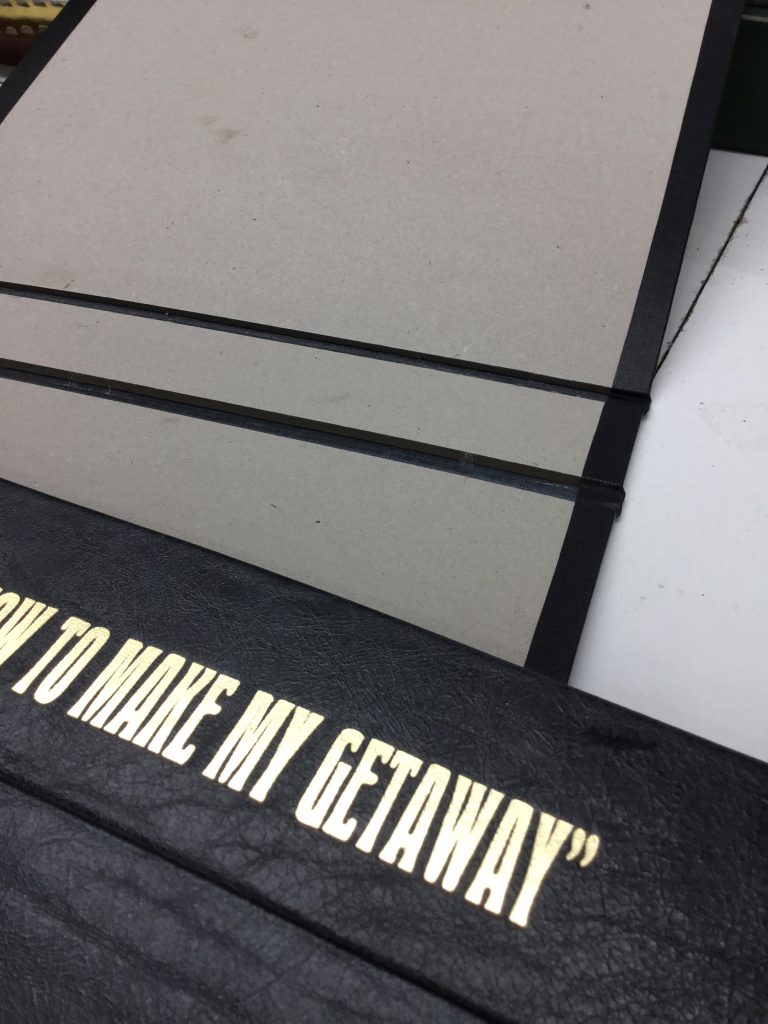
All done by eye and hand
It took TWO DAYS to upload the files for FJ Blissett & Co, the Queen’s own actual bookbinders, to get to work on the printing. And so confident was their projected turnaround of six weeks, that we started selling at the end of September 2017, before they’d got them done. And then, in mid-November, we had to pull the plug because not only had their equipment gone into a full-on meltdown, most of their staff had too. Can’t really blame them. Each of these monsters weighs a minimum of 4.5kg, and just packing the bastards to ship them out nearly killed half a dozen people.
In the event it was February before there were enough books done to ship, and we began travelling down to Acton to send them direct from the bindery right next to where they’d been made. And then, just before Easter 2018, the last fifty or so of the first binding went onto a pallet to come back to our warehouse. And yeah, that went well.
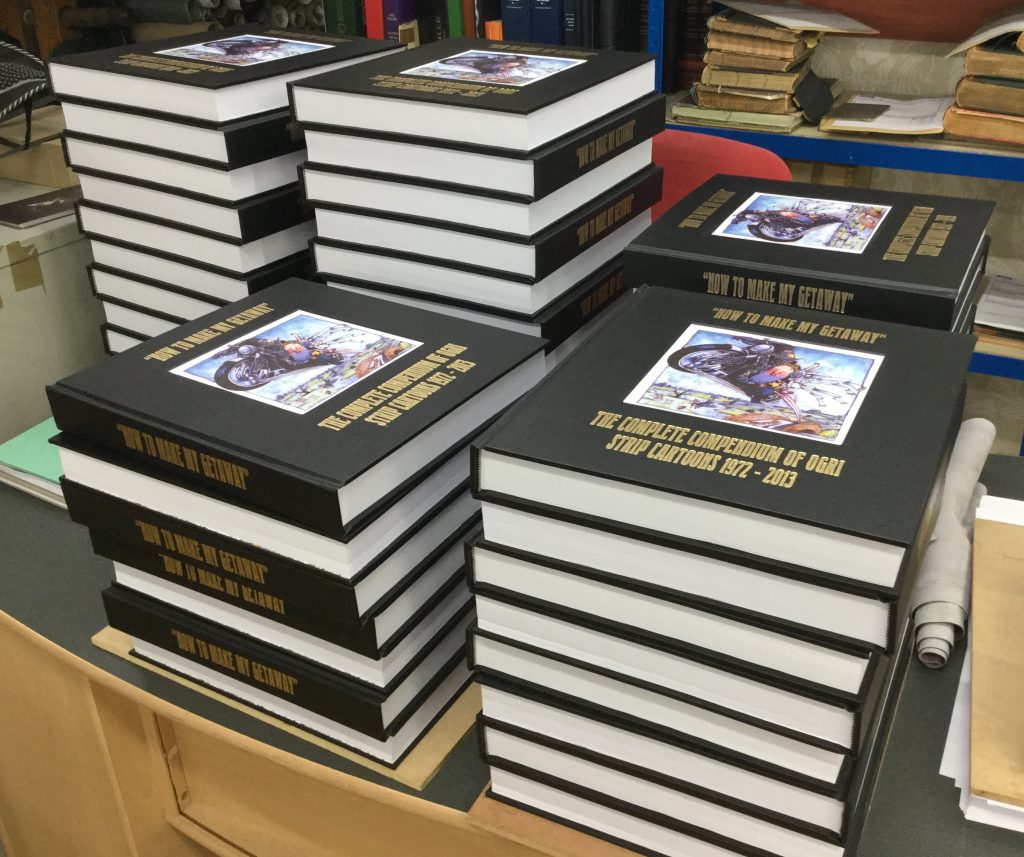
It was August 24th 2018 that the very last of the leather copies went off to its new home, and just a day earlier, the final hundred books, hastily finished to tackle our unexpected ‘out of stock’ situation, trundled up the M40 in Midlife Tim’s van to lodge in our secret warehouse. They shifted pretty quick too, when you consider the price and the lifetime commitment represented by investing in such a thing, and at the time of writing we have twenty left on the shelf. Amazing, really. It’s been a hell of a road, and Nerg, Brick and Bottle ain’t got nothing on [insert name of most hated haulier here].
But yeah, job done. If you fancy one of that last twenty, by the way, you can buy one here.
by OgriBlog Blog Boss
March 26th 2019